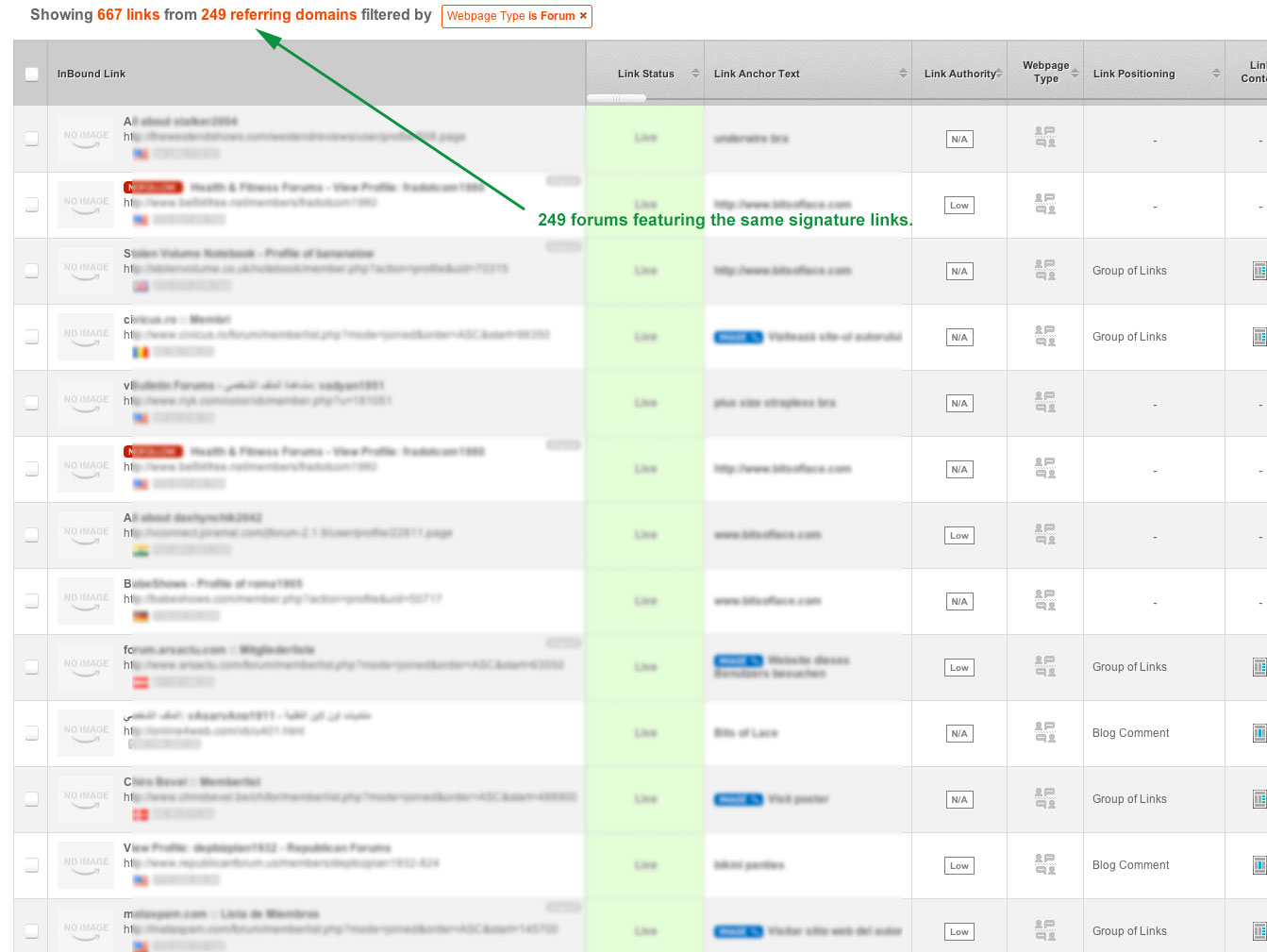There is a huge amount of misconception going on since the existence of the actual “backlink”. With all the latest improvements in the Google’s algorithm these misconceptions should be cleared so that the correct backlink concepts get understood correctly.
1. The Blindness of the Total Link Counts
A lot of SEO professionals are impressed, and guided, by the total raw link counts of a site.
I often hear people talking about the number of links a site has, when, in fact, they should talk about the number of referring domains.
Example: Site XYZ has 100k links. This number is useless … it does not mean anything.
Let’s me put it like this:
It is not about the link counts … it is actually about the referring domains when you try to quickly understand the popularity of a site.
Those 100k links are all coming from 1 referring domain. This isn’t a popular site. It is a link profile generated out of tons of site-wide links. These links do not increase the value of the site at all.
What about, if the site had 1000 links from 300 referring domains.
Much more popular site when you look at the referring domains number.
Forget about the total raw link counts when you try to quickly grasp an overview on the popularity of the site. Referring Domains is the important number.
2. The Natural Unnatural Link Concept
WTF is this?!
How can an unnatural link be natural?
Links, as everything else, should never be put out of context. It’s like taking someone’s phrases out of the discussion. That is called “Fallacy of quoting out of context” and it is the practice of quoting out of context. Usually you get a totally different meaning putting the quote out of the context. And a lot of people do it for various reasons … (but that is another discussion)
The same can be applied to links. Here is a quick example.
First POV – A Link Out of the Context.
Looks like a natural link. What’s wrong with having a forum profile? Nothing. In fact it is recommended to be active on your top industry forums. You will increase your exposure.
Second POV – The same link in the Context of the Link Profile.
Here is the context of the link: 667 links from 249 referring domains. Let me be more accurate. That is 22% of the entire link profile.
So it doesn’t look natural anymore …
Focus on the entire context when you are doing backlink analysis!
3. Google PR is a Great Metric
Google said several times that they intentionally randomize the Google PR on random sites in order to make it harder for webmasters to reverse engineer the quality of a page.
I often hear SEO’s talking about the PR of a site, when they try to qualify the site as a potential link building prospect.
That is the wrong way to do it.(BIG DOT)
Use other metrics in order to quantify the quality of a site. The best metric, is the ranking in Google of that site or page. If the site ranks well, we got a good prospect. If it’s nowhere to be found, ignore it.
Forget about Google PR! It is too misleading.
4. Great Link Analysis Conclusions on Outdated Link Data
This one gives you almost ZERO information, and worst … it can be very misleading.
Did you know that your link profile is made out of LIVE and LOST links.
Live links is obvious, but Lost links are links that once existed and don’t anymore. A tremendous amount of pages become broken every day. Without having a list of freshly crawled data (at least a week old or so) that analysis is not accurate and can be misleading. On a normal site you can easily have a 40% Lost link ratio. If you would include that in your analysis you would have a 40% wrong result.
You should have a system in place that crawls your links on demand and provides you with fresh data, as we do in our toolset, at cognitive.
These are only 4 concepts that a lot of SEO’s still work with without knowing that they might be totally wrong. Hopefully this list will clear these misconceptions and make you a better SEO professional.
I am really interested in your thoughts, and other misconceptions, that you think are still kicking in 2013.
|
1 |
<a href="http://depthdeception.blogspot.ro/2009/10/understanding-evolution.html" target="_blank">*photo</a> |

 Site Explorer
Site Explorer Keyword tool
Keyword tool Google Algorithm Changes
Google Algorithm Changes




I put SEO on the back burner for a while, but since the latest update I’ve recommitted to it because the slates been wiped fairly clean and it’s a good time to make some strong SEO moves again. So I’ve been freshening up, and I was aware of the importance of referring domains vs. total links and natural vs. unnatural, but I had some questions about the other 2 misconceptions you covered. So I’m glad you did too because you reassured my thinking and I’m more confident in the direction I’m going with things now. Thanks Razvan.
With the last point, I have a question. What about related redirects. I have a blog where the links are no longer valid after updates from my parent site but the links are all redirected. Are these links still considered lost?
redirect are considered by Google if they are redirected corectly using 302/or 301 depending on the requirement.
Hi Razvan,
So am i correct in saying that if you have a small percentage of referring domains and a lot of backlinks from these then google will try and penalise your site?
Thanks
Ged
i do not think so that is purely based on this. but if you got a lot of site-wides with commercial anchor text and a few referring domains then yes it could be.
Razvan thanks for the reply
Great Info. i am a begineer. Trying to understand here how do i get refering domains.Please advise.Thanks